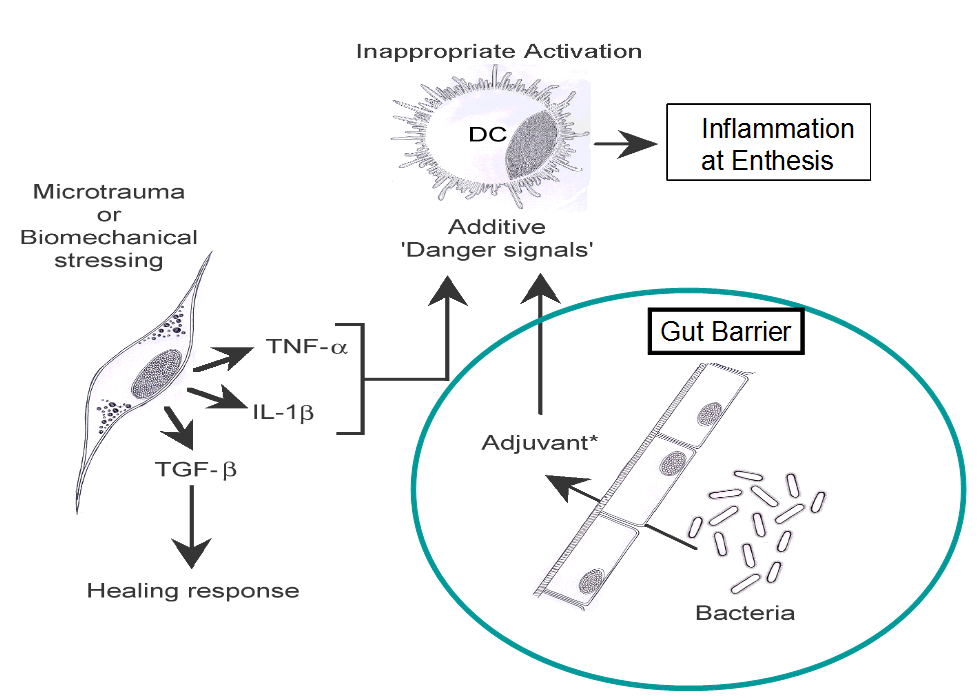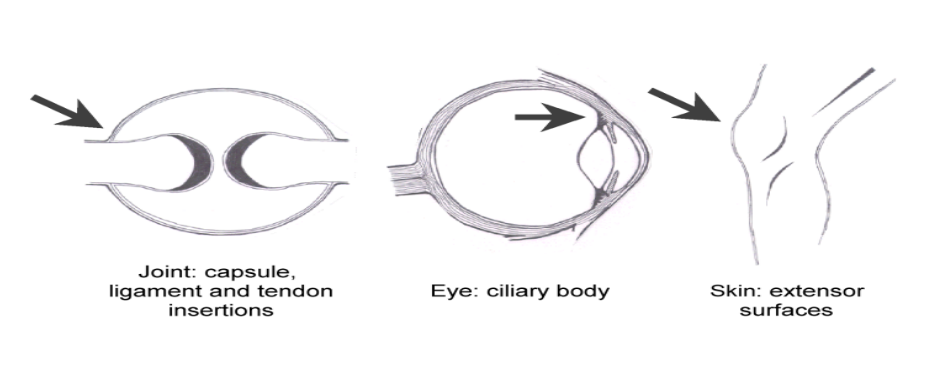The Gut in Ankylosing Spondylitis
Overview of the Gut and Arthritis
Gut inflammation typically is associated with joint pain and swelling.
There is increasing evidence that the major site of involvement in the joints in the arthritis associated with Ulcerative Colitis and Crohns disease is at the attachment sites of tendons or ligaments.
Such sites are termed entheses (singular is enthesis). Inflammation at such sites is termed enthesitis.
Inflammation of the enthesis is fairly common in colitis and is frequently not recognised or misdiagnosed as fibromyalgia.
This website deals with all aspects of enthesitis to help doctors better recognise it and to help patients to help themselves!
Mechanism of arthritis in Inflammatory Bowel Disease
It is estimated that there are over 500 species living in the human intestine and these usually help maintain health.
The normal gut has a complex barrier that keeps bacterial species from invading its lining. These mechanisms include:
- A mucous lining
- Tight connections between gut cells to stop bacterial access
- Secreted antibodies to neutralise bacteria
- Specialised gut cells that can monitor the bacteria living in the bowl
- Effector immune cells to dispose of any organisms that breach the above barrier
- Immune cells that restrain the immune system- example T regulatory cells
- Immune cells that can repair the gut lining- example Gamma delta T cells
- Many other mechanisms

Any damage to the gut barrier may permit bacteria or their constituent molecules to get into the bowel wall.
Even bits of dead bacterial cell wall or other constituents are like "smelling salts" to the immune system.
This bacterial debris can activate immune cells locally or it may get deposited at the enthesis.
These bacterial products that are capable of activating the immune response are called adjuvant.
The enthesis itself appears to be in a state of low level inflammation which is needed for normal tissue repair.
These factors conspire to lead to activation of immunity and resultant joint pain.
As insertions are relatively lacking in blood vessels patients may complain bitterly of joint pain but there may be little to see.
Since joint tendon and ligament insertions occur throughout the body then pain can be felt anywhere. The normal gut has a complex barrier that keeps bacterial species from invading its lining.

Link between the Gut and AS disease activity.
About 50% of AS cases have clinically silent inflammation in the gut.
Younger age (shorter symptom duration), progressive disease, male sex and higher disease activity are independently associated with microscopic gut inflammation in axial Spondyloarthropathy and Ankylosing Spondylitis [1].
Recently it has been shown that the magnitude of inflammation in the sacroiliac joint in AS and Spondyloarthropathy is linked directly to the magnitude of the gut inflammation [2] .
This is a key area of research into the importance of hidden bowel disease as a major factor driving disease expression in AS.
At the time of writing there is no proof that "special dietary measures" or manipulation of the bugs that live in the gut can alter the AS disease course. Again this is a very important area of future research.
References


Resources
The NASS UK based AS resource page AS and the gut.
Spondylitis Association of America search results for "GUT"